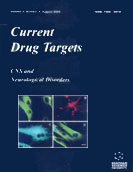Abstract
Substance P (SP) is a neuropeptide with a known involvement in anxiety and nociception processes, which acts through the activation of neurokinin-1 (NK1) receptors. Recently, a NK1 receptor antagonist has been shown to display antidepressant activity comparable to that of the selective serotonin reuptake inhibitor paroxetine, but with a better side effect profile. Given their lack of affinity for monoamine transmitters, the antidepressant role of NK1 receptor antagonists has been attributed to a unique mechanism. However, monoaminergic neurons receive an important SP innervation and also posses NK1 receptors (noradrenergic neurons of the locus coeruleus) or are in close apposition to NK1-containing cells (serotonergic neurons of the dorsal raphe nucleus). In addition, NK1 receptors are expressed in brain regions involved in the regulation of affective behaviours and the neurochemical response to stress. For these reasons, it has also been postulated that the purported antidepressant action of NK1 receptor antagonists may result from the modulation of such brain monoaminergic systems. Indeed, systemic administration of NK1 receptor antagonists enhances the firing rate of dopaminergic, noradrenergic and serotonergic neurons. This effect on serotonergic cells is seen consistently only after long-term treatment and has been associated with a functional desensitisation of somatodendritic 5-HT1A autoreceptors. Mice lacking NK1 receptors also show an increased basal firing rate of 5-HT cells in vivo. These observations are suggestive of a predominating inhibitory role of SP upon monoaminergic neurons under physiological conditions and would provide support for the antidepressant activity of NK1 receptor antagonists, although this may be achieved through an indirect action on other transmitter systems. The possibility that this class of drugs can modulate the function of only certain serotonergic pathways could be the basis of their better side effect profile. However, although preliminary studies showed some therapeutic efficacy for NK1 receptor antagonists, the first compound developed (MK- 869) has been discontinued from Phase III trials because it was not more effective than placebo in the treatment of depression. Further research is needed to ascertain whether the mechanism of action of NK1 receptor antagonists may be relevant to the antidepressant treatment.
Keywords: antidepressant properties, substance p antagonists, monoaminergic mechanisms?, neurokinin-1 (nk1) receptors, 5-ht1a autoreceptors
 3
3

















